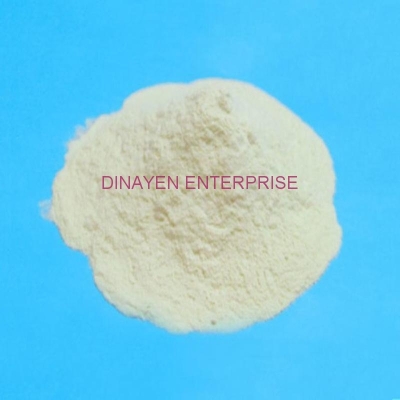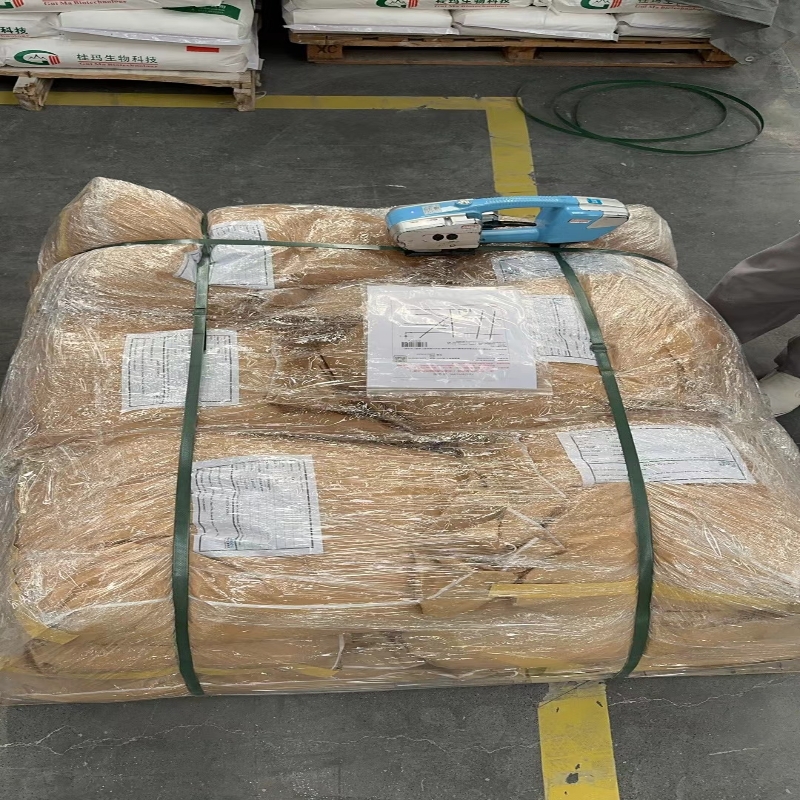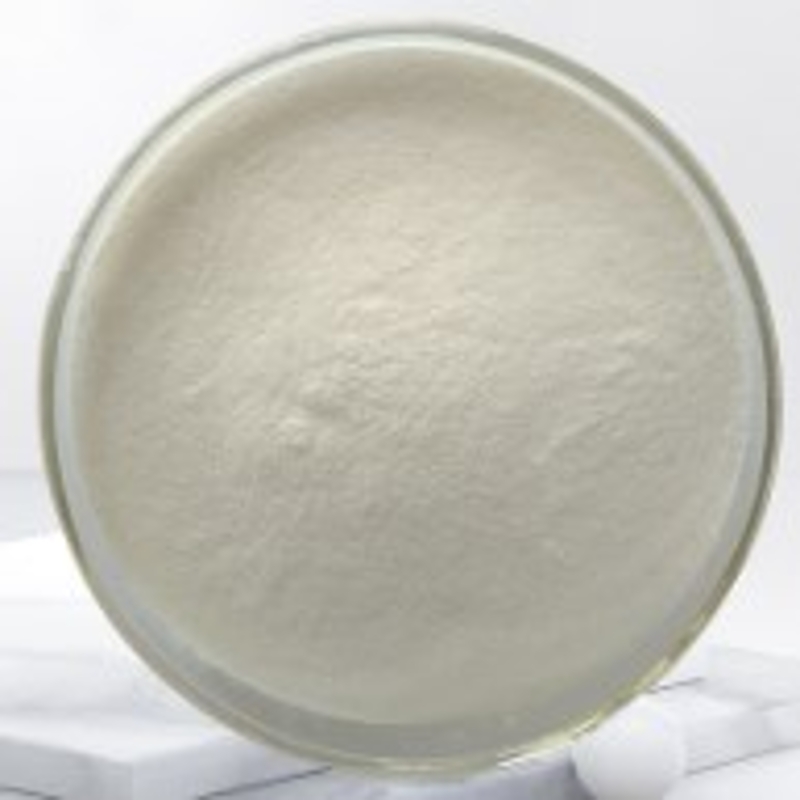The function and application of yeast in food industry
-
Last Update: 2007-09-14
-
Source: Internet
-
Author: User
Search more information of high quality chemicals, good prices and reliable suppliers, visit
www.echemi.com
In recent years, it has been pointed out that yeast, which is widely used in the food industry as a bulking agent, can cause Alzheimer's disease due to its aluminum content So, what is yeast? What is its safety? Is it good or bad for human health? Experts point out that yeast is a single cell organism with a natural and rich nutrition system Yeast cells contain a lot of organic matter, minerals and water Organic matter accounts for 90% ~ 94% of the dry weight of cells, in which protein accounts for 35% ~ 60% of the dry weight of cells, carbohydrate accounts for 35% ~ 60% and lipid accounts for 1% ~ 5% Yeast cells are also rich in a variety of vitamins, minerals and enzymes, which can promote their digestion and absorption In addition, it also contains many unknown active substances, such as ergosterol, glutathione, superoxide dismutase, coenzyme A and so on Yeast is rich in protein, including a variety of small peptides and free amino acids Its amino acid composition is balanced and the proportion is close to FAO standard The small peptide in yeast can be absorbed directly through intestine, which has high bioavailability and can play an immediate role If it is added before or during exercise, it can reduce protein degradation, maintain normal protein synthesis in the body, reduce or delay other physiological changes caused by exercise, and achieve the effect of anti fatigue The reduced glutathione glycopeptide (GSH) contained in yeast is also a small peptide It is an indispensable substance to maintain the balance of the internal environment, and also a strong antioxidant It has the anti-aging effect, the protective effect on the liver, and the prevention of sports anemia In addition, yeast has certain detoxification effect on drugs, heavy metals, carbon monoxide, etc Yeast is rich in a variety of minerals and microelements, such as calcium, iron, zinc, magnesium, selenium, chromium, manganese and so on These nutrients exist in the form of life combination, which is not only natural, safe, but also easy to be digested and absorbed, and has high bioavailability Selenium is one of the essential microelements for human body It can resist aging, tumor, arteriosclerosis, Kashin Beck disease, detoxify and improve immunity It is the only microelements related to antiviral mutation Yeast is rich in vitamins, especially B vitamins, which are all kinds, rich and balanced If the human body lacks one or more of them, there will be beriberi, glossitis, leprosy, dermatitis, anemia, nausea, etc However, as B vitamins are water-soluble vitamins, they are metabolized rapidly in human body, and redundant vitamins will be discharged with urine Therefore, people need to supplement enough B vitamins every day to meet the needs of metabolism, and yeast is a good source of B vitamins The main carbohydrate in yeast is polysaccharide, the most content is cell wall, which is mainly composed of mannan and dextran Cell wall polysaccharide can effectively promote the absorption of iron, calcium and other minerals Trehalose in yeast can protect the activity of bioactive substances At the same time, yeast has low fat content and no cholesterol Ergosterol is the precursor of vitamin D Yeast, because of its high nutritional content, is not only directly developed as a nutritional food, but also can be further made into a variety of nutritional active substances As a carrier of nutritional food, further deep processing will become a food with more nutritional and health value Yeast has a long history of application in the field of food People are familiar with it by brewing wine and fermenting flour products At present, its application has expanded to medicine, food additive, health food, condiment, feed, culture medium and other aspects In view of the unique nutritional and health value of yeast, the research on developing various kinds of food and health food around yeast is more and more extensive and in-depth At present, there are three main directions of yeast development at home and abroad: first, further research and development of traditional yeast to improve production technology, reduce production costs and improve the utilization of raw materials; second, the development of biopharmaceuticals through the expression of exogenous proteins in yeast genes; third, the development of functional yeast enriched with functional factors, and the deep processing of nutritional yeast and functional yeast to make nutritional protection Healthy food Yeast has a more extensive application prospect in food and nutrition health food There are abundant yeast foods in the market Among them, yeast extract is a kind of food developed with yeast as raw material It has a very strong meat flavor and can improve the flavor and taste of food It has been widely used in the field of condiments At the same time, it can also be used as a nutritional supplement because of its rich nutrition In addition, yeast can be further processed into nutrition and health food by using modern biotechnology In this respect, the research in China is more in-depth With the emergence of high-quality selenium rich, chromium rich, iron rich, zinc rich and germanium rich yeast, as well as nutritional yeast and functional yeast which are rich in functional factors such as glutathione, trehalose and ergosterol yeast, the high application value of yeast in nutrition and health food is gradually explored and fully utilized Such as selenium yeast, chromium yeast, Zinc Yeast and so on, because they contain minerals and trace elements, and have high bioavailability and natural safety, they are called a valuable nutritional and health food At present, active yeasts are all produced by fermentation with molasses as raw material, using modern bioengineering technology The product must be inspected as per the national standards (qb1501-1992 Baker's yeast, qb2074-1995 active dry yeast) before entering the market With the application of various new technologies in the fields of genetic engineering, fermentation engineering, biochemical engineering and enzyme engineering, yeast and its deep-processing products in the preparation process involve nutrient enrichment, separation, refining, as well as the process technology with stable biological activity, which fully realizes the scientific controllability, thus ensuring the safety of yeast as a nutritional food.
This article is an English version of an article which is originally in the Chinese language on echemi.com and is provided for information purposes only.
This website makes no representation or warranty of any kind, either expressed or implied, as to the accuracy, completeness ownership or reliability of
the article or any translations thereof. If you have any concerns or complaints relating to the article, please send an email, providing a detailed
description of the concern or complaint, to
service@echemi.com. A staff member will contact you within 5 working days. Once verified, infringing content
will be removed immediately.







